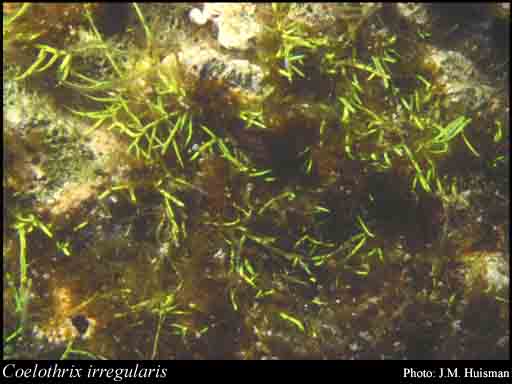- Reference
- Dansk Bot.Ark. 3:389 (1920)
- Conservation Code
- Not threatened
- Naturalised Status
- Native to Western Australia
- Name Status
- Current

Scientific Description
Habit and structure. Thallus in low cushions or clumps 2–4 cm tall, purplish brown and occasionally iridescent in situ, dried specimens deep red or purple, with stiff irregularly and sparingly branched terete axes and branches attached and reattached to each other and to the substratum by numerous tufts of rhizoids. Branches opposite or alternate, with divergent apices, mostly 200–500(–900) µm in diameter. Cortex a single layer of cells covering the thallus surface; cells increasing to c. 60 µm in diameter towards the central cavity and becoming less dense; sessile gland cells scattered on innermost medullary cells.
Reproduction. Tetrasporangia in nemathecial sori 1.2–1.5 mm long and encircling branch apices, ovoid to ellipsoid, tetrahedral or irregulary decussate, 50–70 µm long and 40–60 µm in diameter. Other reproductive structures not seen.
Distribution. Widespread in the tropical Indo-West Pacific region and tropical western Atlantic Ocean.
Distribution
- IBRA Regions
- Pilbara.
- IBRA Subregions
- Roebourne.
- IMCRA Regions
- Abrolhos Islands, Canning, Kimberley, Ningaloo, Pilbara (nearshore), Pilbara (offshore).
- Local Government Areas (LGAs)
- Broome, Carnarvon, Greater Geraldton, Karratha, Wyndham-East Kimberley.